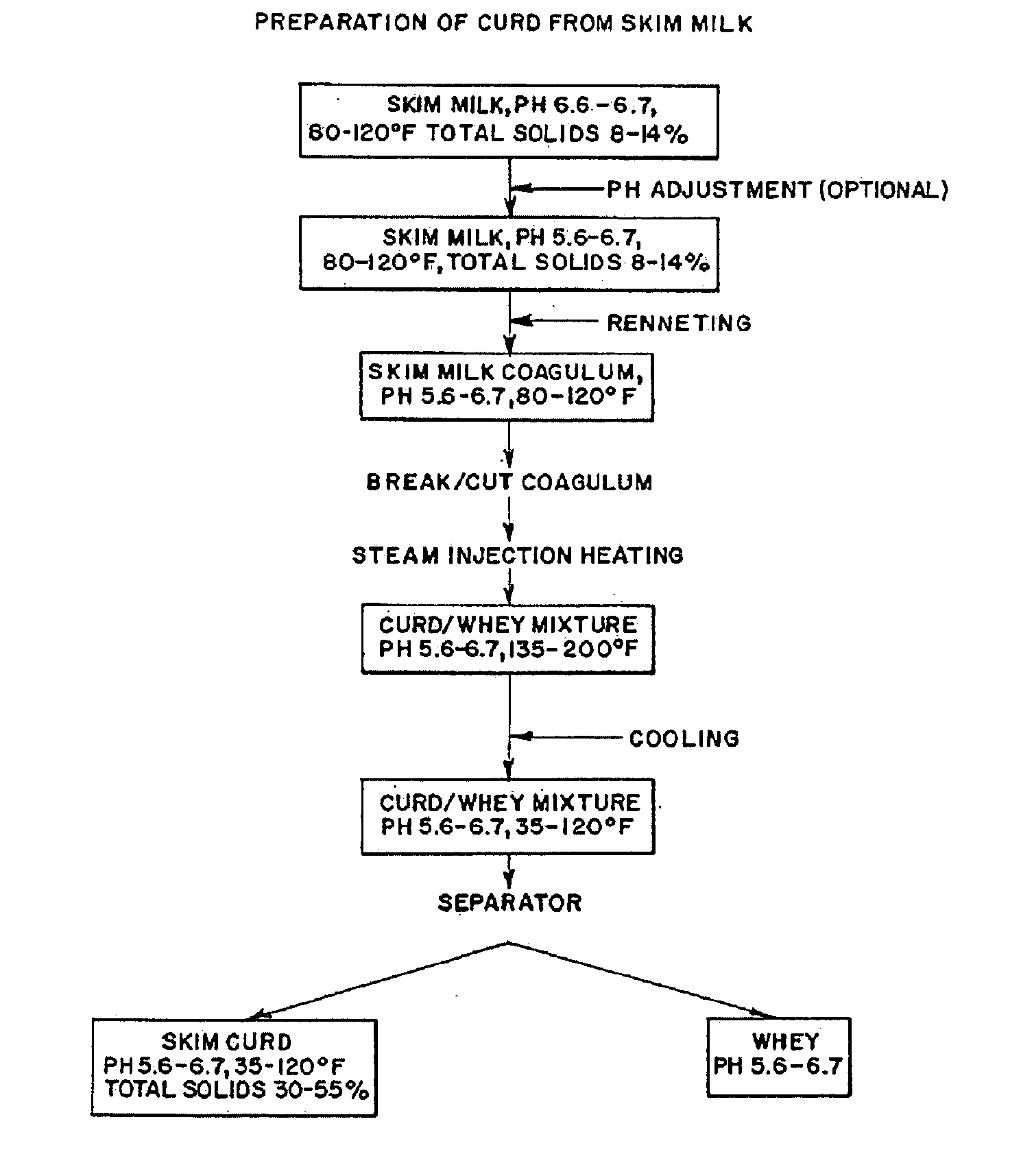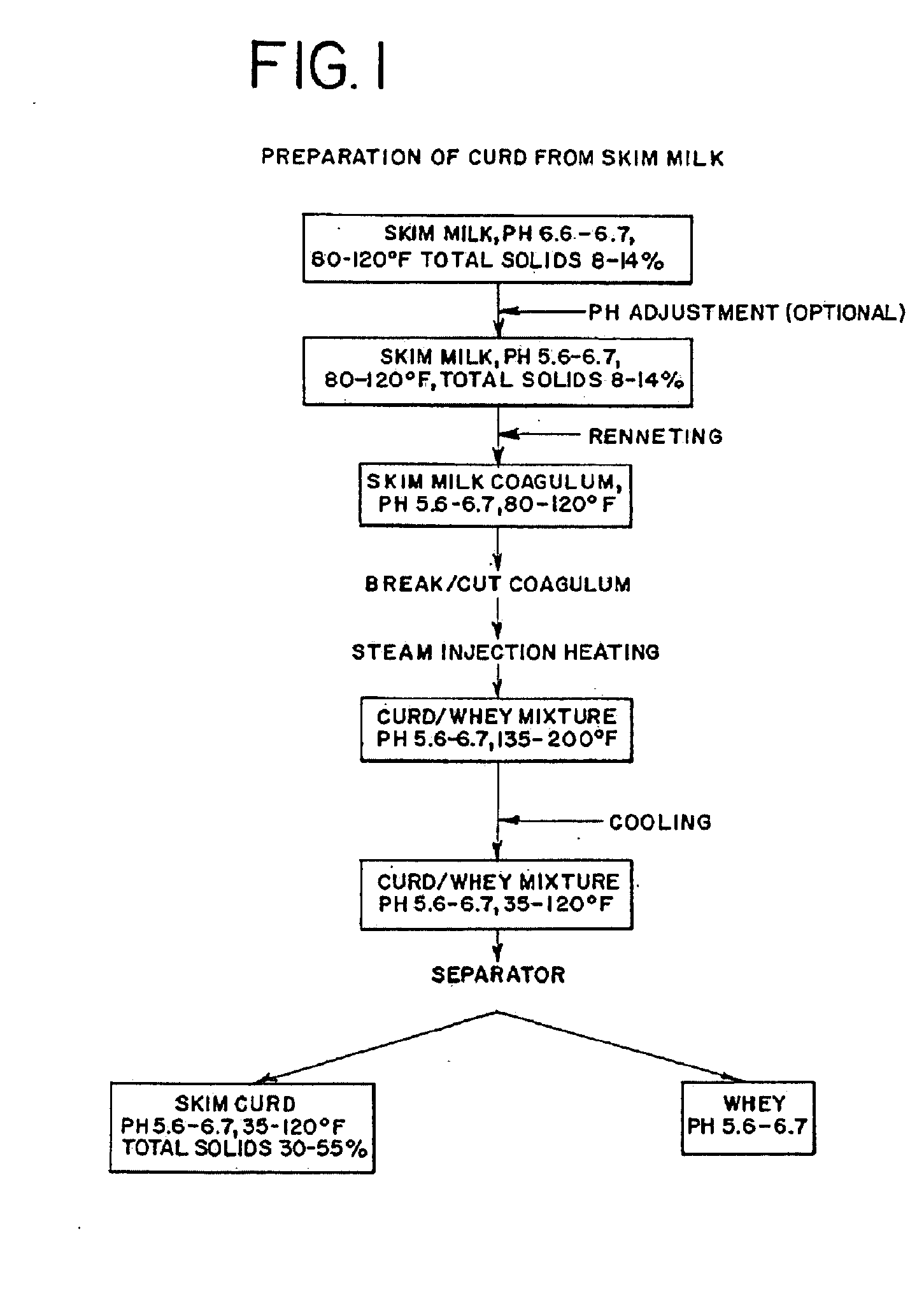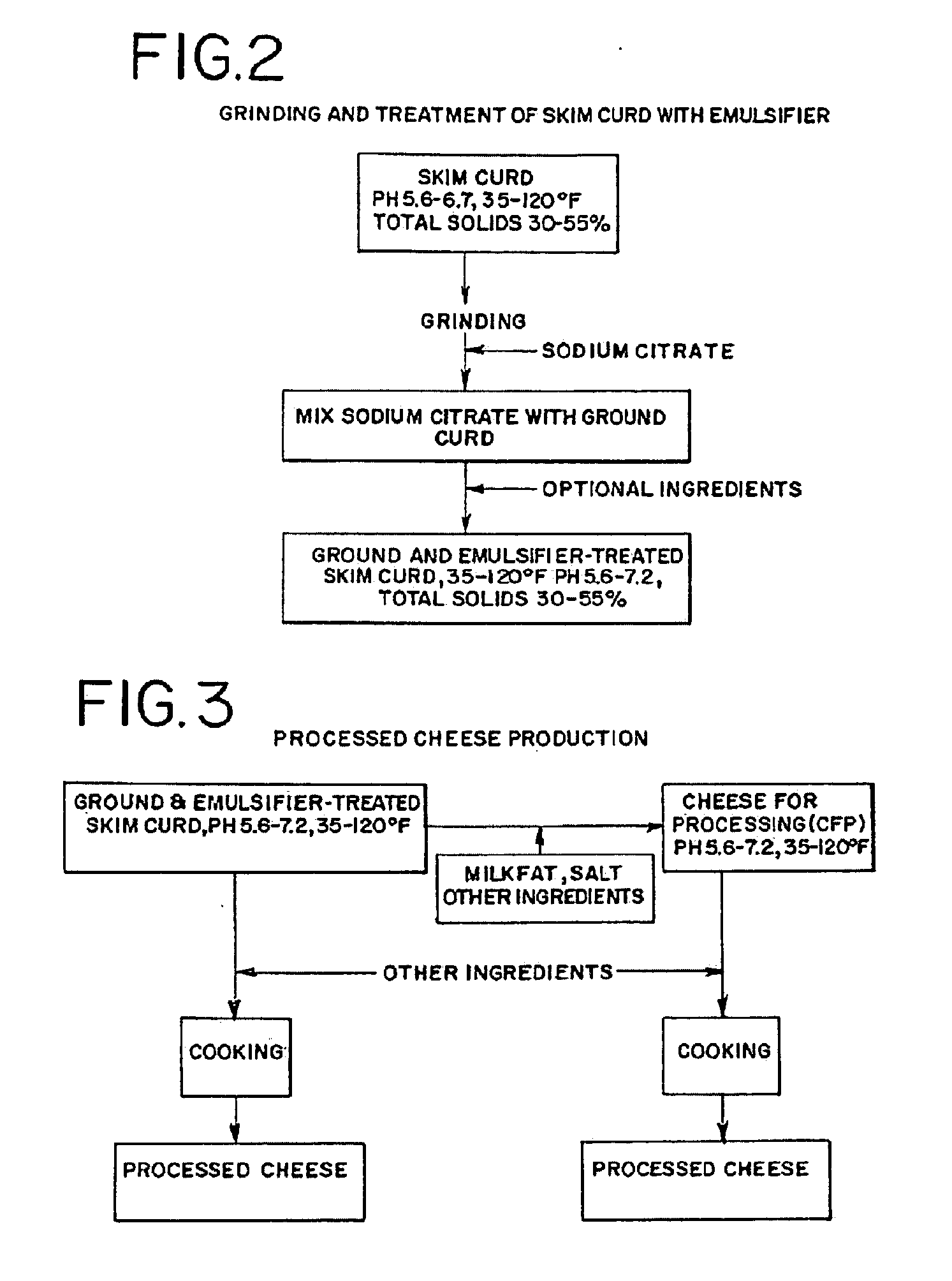Curds for processed and imitation cheese, cheese products produced therefrom, novel intermediate products and methods of making same
- Summary
- Abstract
- Description
- Claims
- Application Information
AI Technical Summary
Benefits of technology
Problems solved by technology
Method used
Image
Examples
example 1
Preparation of Skim Curds (pH 6.6)
[0099] To prepare reconstituted skim milk, 78.5 lb of nonfat dry milk (NFDM) (Dairy America, Fresno, Calif.) was mixed with 775 lb cold water (45° F.) in a 200 gallon milk tank with a 16″ agitating propeller blade operating at 94 rpm. The NFDM / water mixture was kept cold (<45° F.) with continuous agitation overnight to insure complete hydration of the NFDM solids.
[0100] The reconstituted skim milk had the proximate composition shown in Table 1.
TABLE 1% Total%%%SolidsProteinLactoseAshpHRecon. Skim Milk9.043.194.250.776.6
[0101] The reconstituted skim milk was warmed to 90° F. with hot water (190° F.) jacket heating. Rennet was added (57 ml) (Chymax Extra (2×), Chris Hansen, Milwaukee, Wis.) into the skim milk with the agitator on for one minute. Rennet treatment of the milk was allowed to continue for an additional 60 minutes with the agitator off. The skim milk clotted and formed a continuous soft gel coagulum which was then broken / cut by the ag...
example 2
Treatment of Skim Curds (pH 6.6) with Sodium Citrate
[0103] Twenty lbs of Urschel-ground skim curds from Example 1 were mixed with 0.75 lb of sodium citrate for 2 minutes in a 50 lb twin-screw Reitz blender with the auger speed set at 44 rpm. The sodium citrate-treated skim curds had a composition as shown in Table 3.
TABLE 3%%%MoistureProteinLactosepHSkim curds56.0234.021.907.03
example 3
Processed Cheese made with Sodium Citrate-Treated Skim Curds
[0104] Processed cheese formulas containing conventional barrel cheese only (Formula 3A) and sodium citrate-treated skim curds from Example 2 (Formula 3B) were calculated and are shown in Table 4.
TABLE 4Processed Cheese Formula(lbs. per 10 lb cook)Cheese / IngredientFormula 3AFormula 3BBarrel cheese (7 day old)5.702.80Sodium citrate-treated02.25skim curds fromExample 2 (4 days old)Sodium Citrate0.330.25Sorbic Acid0.020.02Sodium Chloride0.160.21NFDM0.710.58Conc. Milkfat (CMF)1.422.66Lactic Acid05 gramsWater1.661.50Total Weight1010
[0105] Both formulas were targeted at the same finished product composition (39.8% moisture, 31.0% fat, 2.55% sodium chloride and 4.0% lactose) and contained the same amount of sodium citrate solids (2.9%). Due to the sodium citrate treatment of the skim curds (Example 2), the addition of sodium citrate as the processed cheese emulsifying agent was adjusted accordingly, from 0.33 lb / 10 lb (in Form...
PUM
 Login to View More
Login to View More Abstract
Description
Claims
Application Information
 Login to View More
Login to View More - R&D
- Intellectual Property
- Life Sciences
- Materials
- Tech Scout
- Unparalleled Data Quality
- Higher Quality Content
- 60% Fewer Hallucinations
Browse by: Latest US Patents, China's latest patents, Technical Efficacy Thesaurus, Application Domain, Technology Topic, Popular Technical Reports.
© 2025 PatSnap. All rights reserved.Legal|Privacy policy|Modern Slavery Act Transparency Statement|Sitemap|About US| Contact US: help@patsnap.com



